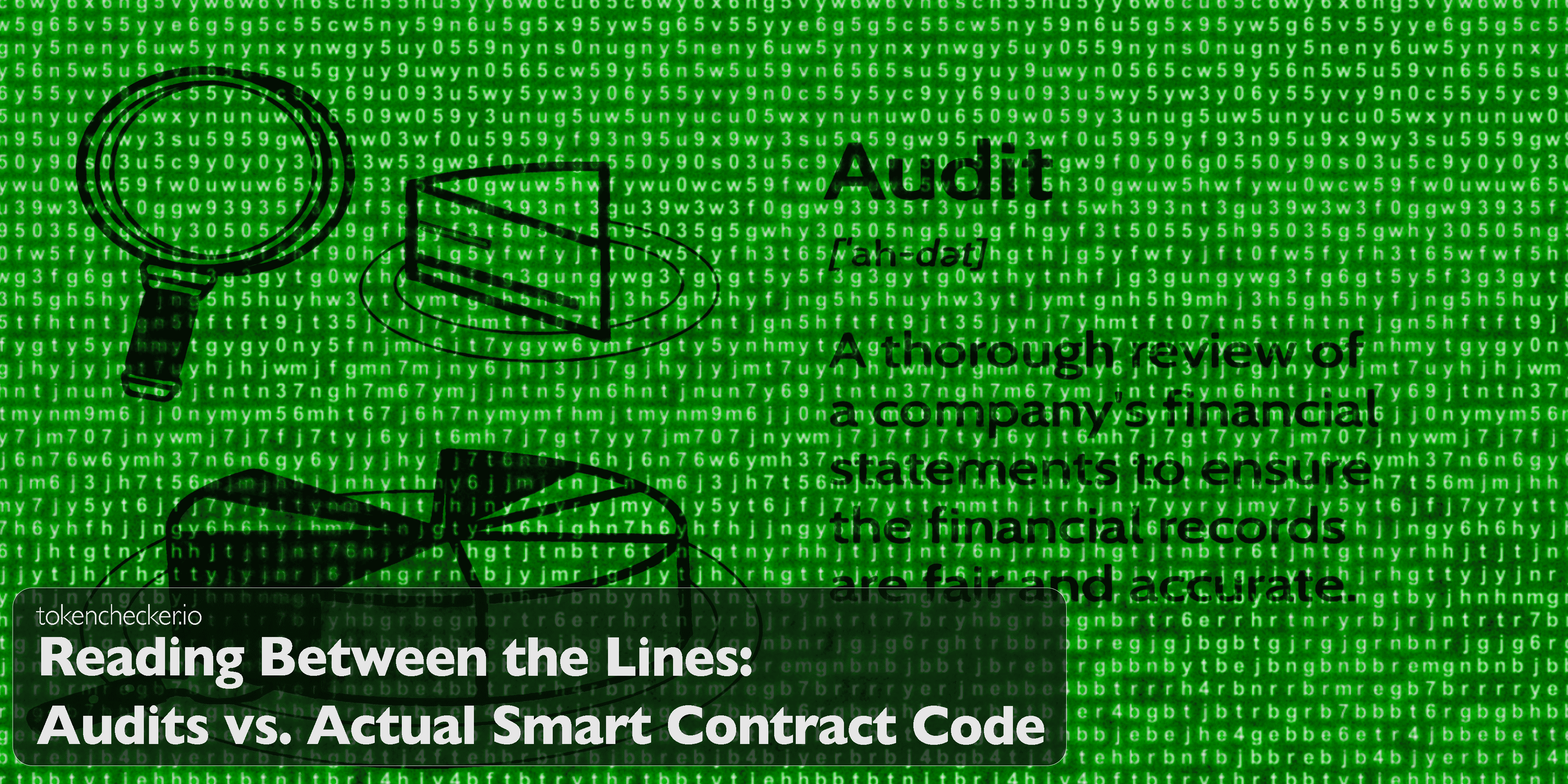
Reading Between the Lines: Audits vs. Actual Smart Contract Code
Introduction
Smart contract audits have become the industry’s badge of trust. If a project has been audited, it must be safe right? Not quite.
What most crypto investors don’t realize is that the code reviewed during an audit isn’t always the code that ends up running on-chain. And even when it is, changes after the audit, compiler differences, or subtle bytecode mismatches can quietly introduce vulnerabilities that no one catches until it’s too late.
This guide breaks down the difference between what’s audited, what’s deployed, and why that gap could mean the difference between a secure protocol and a multi-million-dollar exploit.
What a Smart Contract Audit Actually Covers
Audits are essential. A good audit reviews the logic, checks for known vulnerabilities, tests the code under stress, and flags any permissions that might be dangerous in the wrong hands. Most reputable firms will examine:
- Reentrancy protections
- Integer math handling
- Access control
- Upgradeability via proxy contracts
- Oracle integration
But here’s the catch: audits are done on a frozen version of the source code. That’s the human-readable code written in Solidity or another high-level language. What ends up on-chain is the compiled bytecode the machine version of the contract.
And if anything changes between audit and deployment even a compiler setting the final code may behave differently than expected.
Source Code vs. Bytecode: Where Things Break
Source code is what developers and auditors read. Bytecode is what actually runs on the blockchain.
In a perfect world, they’d match perfectly. But in practice:
- A dev might recompile with different settings
- Someone might tweak a line post-audit
- The uploaded source code might not match the deployed bytecode
This is why block explorers like Etherscan display warnings when a contract's source code doesn't fully match what’s live on-chain. It’s also how some scams slip through they show clean, verified source code while hiding malicious logic in the bytecode.
When Audits Create False Confidence
Some of the biggest DeFi exploits happened after audits. Not because the audits were bad, but because:
- Code was changed after the audit
- New upgrade logic introduced vulnerabilities
- Compilers or build environments weren’t locked
Investors see “audited by XYZ” and assume everything is fine. But audits are just a snapshot not a continuous guarantee of security.
tokenchecker.io understands this and highlights verification gaps directly in its Contract Analysis section. It looks for:
- Delegatecall and proxy logic that might be upgradeable
- Dangerous mint functions or blacklisting tools
- Whether the source code is verified and matches bytecode
This lets you validate what’s actually running not just what’s written in a PDF report.
Case Studies: When the Code Didn’t Match the Promise
- Wormhole (2022): $325M was lost after a faulty upgrade reset the contract’s state, letting attackers mint tokens.
- Parity Wallet (2017): Poorly initialized shared logic allowed anyone to kill the library contract, freezing $150M.
- Audius (2022): A proxy storage layout mismatch let attackers drain community funds.
All three cases involved audited code. All three were undone by post-audit changes or technical subtleties in upgradeability.
What Real Security Looks Like
An audit is only part of the puzzle. The real security checklist includes:
- Source code verification on-chain
- Compiler version locking
- Timelocks on upgrades
- Multisig or DAO-controlled admin keys
- Real-time monitoring for exploit patterns
And most importantly, continuous testing. tokenchecker.io doesn’t just rely on audit badges it checks what the contract can do now.
Final Thoughts
An audit tells you the contract was safe once. It doesn’t mean it still is.
To protect yourself, go deeper than the badge. Look for on-chain verification. Use tools like tokenchecker.io to compare source code and bytecode, scan for malicious functions, and check upgrade permissions.
In a space that moves this fast, what matters isn’t what was once true it’s what’s true right now.